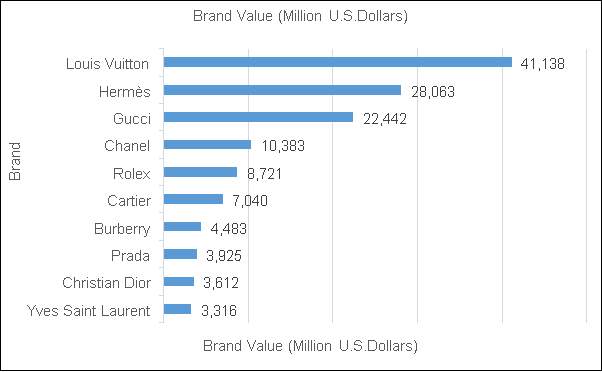Brand Building Process of a Luxury Fashion Brand: Methodology
Info: 1064 words (4 pages) Dissertation Methodology
Published: 22nd Feb 2025
Other sections of this dissertation:
- Introduction
- Literature Review
- Methodology
3. Research Methodology
3.1 Aim
The aim of this dissertation is to understanding the brand building process of luxury fashion brands using the nine dimensions identified by Fionda and Moore (2009).
3.2 Methodology
Research methodology defines the path and provides a systematic approach to achieving the research objective. A qualitative approach is adopted as it integrate information from various sources.
The main research methods associated with qualitative research are as follows(Bryman & Bell, 2015):
- Ethnography/participant observation: In this method the researcher “is immersed in a social setting” to listen and observe so as to gain an understanding of the culture of a group.
- Qualitative interviewing.
- Focus groups.
- Language-based approaches, such as conversation analysis and disclosure.
- “Collection and qualitative analysis” of documents and texts.
For the purpose of this qualitative research “collection and qualitative analysis” of documents and texts are done (Bryman & Bell, 2015). Document analysis is a “systematic procedure” for evaluating and reviewing both electronic and printed material (Bowen, 2009). Similar to other methods in qualitative research, data needs to be examined, analysed and interpreted so as to obtain understanding and “develop empirical knowledge” (Strauss & Corbin, 2008).
Role and Value of documentary analysis as a research technique: The roles of documentary analysis can be summarized as follows (Bowen, 2009):
- Documents can provide historical insights and background information which can help the researchers to understand the roots of the specific problem.
- Documents are a source of supplementary research data. Insights and information from documents are value additions to the knowledgebase.
- Documents helps track developments and changes. When various versions and drafts of any document is available, a researcher can easily track the changes over a period of time, by comparing them.
- Documentary analysis helps in the cross verification of data and findings from different sources.
This dissertation analyses the brand building process of four luxury brands namely, Prada, Burberry, Gucci and Hermès, by applying the nine dimensions identified by Fionda and Moore (2009) to each of these brands. These brands have also been compared with each other with respect to each of the nine dimensions.
Burberry Group PLC is a “British luxury fashion house”, selling fragrances, fashion accessories, cosmetics, sunglasses and ready to wear outwear (Coveted Edition Magazine, 2015). Burberry was founded by Thomas Burberry in the year 1856 (Burberry, n.d.).
Gucci is an “Italian luxury brand” of fashion goods and leather goods (PELLE, 2017). It was founded by Guccio Gucci in 1921 in Florence (PELLE, 2017).
Hermès International S.A., or Hermès is a high fashion “French luxury goods manufacturer” (Martin Roll, 2018). It was established in 1837 by Thierry Hermès (Martin Roll, 2018). It deals in a range of products like lifestyle accessories, leather goods, ready-to-wear and perfumes (Martin Roll, 2018).
Prada is an “Italian luxury fashion house”, dealing in a range of products like travel accessories, perfumes, leather handbags, ready to wear, shoes, and other fashion accessories (Statista, n.d.). It was founded by Mario Prada in 1913 (PRADA Group, n.d.).
The case brands have been chosen on the basis of the following criteria:
- The brands have been identified by Statista to amongst the leading 10 most valuable luxury brands worldwide in 2018 in terms of their brand value (Brown, 2018).

Figure 6 Brand value of the leading 10 most valuable luxury brands worldwide 2018 (Brown, 2018)
- All of the above four brands have a great history. Burberry and Hermès were founded in the early eighteenth century whereas Gucci and Prada were founded in the early nineteenth century. This helps in a historical review of the brands, and understand the role of history and heritage on brand image and brand value.
- All these brands have been named after the names of their founders. Most importantly these brands consider country of origin, as an important means of enhancing their brand value and image.
Secondary sources of data such as the website of the brands, industry reports, company annual reports, fashion magazines, new articles etc have been used for the purpose of this analysis.
This method will help us understand the dimensions of luxury fashion brands, which will not only provide an understanding of the nature of marketing in the luxury sector but also help us understand about the “functioning of branding in general” (Fionda & Moore, 2009).
3.3 Limitation
Following are some other limitations of using the aforesaid methodology:
- A major disadvantage of the aforesaid approach is that, the findings cannot be applied to a wider set of data or population, with the “same degree of certainty that quantitative analyses can” (Atieno, 2009). The primary reason being that the findings of the analysis are not tested, to find out whether they are “statistically significant”, or subject to change (Atieno, 2009).
- In general, documents are produced for a predefined purpose, and the contents might not necessarily match the needs of the researcher (Bowen, 2009). Thus they might not be sufficient to answer the questions of the researcher (Bowen, 2009).
Cite This Work
To export a reference to this article please select a referencing stye below:
Related Services
View allRelated Content
All TagsContent relating to: "Branding"
Branding is widely thought of as simply designing a logo or symbol used to identify a company but is a much broader practice that aims to give meaning to a company and its products or services through researching and developing recognizable features, behaviours and practices that shape the way consumers see them.
Related Articles
DMCA / Removal Request
If you are the original writer of this dissertation methodology and no longer wish to have your work published on the UKDiss.com website then please:




